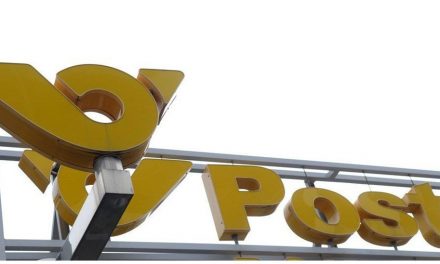
U.S. Postal Service expands mail-sorting technology
Technology that successfully boosted postal efficiencies in the processing, distribution, and delivery of letter mail will soon be applied to the sorting of what the Postal Service refers to as "flats"- large envelopes, magazines, catalogs, and circulars.
Known as the Flats Sequencing System (FSS) program, the initiative approved today by the Postal Service Board of Governors allows the agency to move forward with plans to employ sophisticated equipment to sort flat-mail pieces for letter carriers, who now must manually sequence this mail before leaving the office for their routes.
"Using technology to sort flat mail into the order of delivery for letter carriers will increase efficiency in the office and allow carriers to begin delivering to their customers earlier in the day," said Walt O'Tormey, vice president, Engineering. "The Postal Service experienced significant benefits in the 1990s by automating the processing and sequencing of letter mail, and we hope to extend these improvements to the processing of flats."
The FSS equipment is designed to sequence flat mail at a rate of approximately 16,500 pieces per hour. Scheduled to operate 17 hours per day, each machine will be capable of sequencing 280,500 pieces per day to more than 125,000 delivery addresses.
Phase I of the program calls for an initial order of 100 FSS machines to be deployed to 33 postal facilities beginning in the summer of 2008.
A prototype FSS was installed earlier this year at the Indianapolis, IN, Mail Processing Annex, where it was tested sorting mail in delivery sequence for carriers in that area. A full-size pre-production machine will be installed at the Dulles, VA, mail processing facility, where it will operate six days a week for one year (August 2007 to July 2008).
As this test proceeds, the Postal Service will study and measure the system's effect on downstream transportation, logistics, work methods, and other long lead-time activities required to support deployment in 2008.
"Delivery remains our largest cost, accounting for 43 percent of all expenses," said O'Tormey. "That, combined with costs to serve almost two million new addresses each year, means we must pursue every opportunity to improve our efficiency and the service we provide to our customers."
In other action, the Board of Governors approved a fiscal year 2008 appropriation request totaling USD153.4 million. This annual request to Congress, as provided under current law, includes USD83.5 million in reimbursement for free services the Postal Service is required to provide, including free mail for blind persons and for overseas voting. This appropriations request also includes reconciliation adjustments for previous years based upon final audited mail volumes, which are USD24.9 million for fiscal year 2005 and USD16 million for fiscal year 2006. In addition, the request includes USD29 million for the latest annual installment from the Revenue Forgone Reform Act of 1993.
Under current law, the Postal Service is also authorized to request partial reimbursement for the costs incurred in providing universal service. However, the Postal Service has not requested funds for this purpose since fiscal year 1982.
Also at its meeting today, the Board approved the Postal Service Fiscal Year 2006 Annual Report. The report, available online later this month, highlights USPS's "24-Hour Clock" – 700,000 men and women of the Postal Service keeping the mail in constant motion to provide the service that customers depend on and trust.













